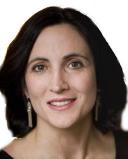The museum at Auschwitz-Birkenau is updating its image, hoping to educate people in a different way about the Holocaust. What does it mean to look at the world's largest cemetery - and to look differently?

"work makes you free"
Psychohistorian Joel Markowitz understands the changes in this way: "Neurologists tell us that memories aren't fixed representations of experiences (like photos or films); that, in continuous flux, they die and are reconstituted innumerable times in altered forms. That they are changing abstractions of experiences. Museums collect evidence of past events... The collective Jewish mind uses such museums to work through its remarkable levels of trauma and loss; and to better understand their history and post-Holocaust evolution as a very different people than they had been."
A large group mourns like families and individuals do. As members of that group refocus on historical objects and events, the psychic images of trauma can be worked through and neutralized. The mourner is gradually able to diffuse their internalized representations of suffering and detach from the pain of the past. So the theory goes.
But psychoanalyst Merle Molofsky asks "Can we truly complete work on extreme trauma and loss? Or does it remain residual in even the healthiest of psyches and cultures? Perhaps we need our scars. We need to recover from the immediate injury, the bleeding wound, but scars are memory manifested... We cannot look away. There are ethical and moral concerns regarding averting our eyes, ignoring the assault on others. And of course we need to look at the past, to heal ourselves, to heal cultures, to heal the future."
The Auschwitz State Museum in the suburbs of Oświęcim Poland faces new challenges with the passing of the last generation of Holocaust survivors, says director Piotr Cywinski. A proposed exhibition will include information about how the camp worked and the Germans who ran it - when previous curators, the survivors of the 1950s, preferred to erase the Nazis from memory and the content of exhibitions. This show would recognize the tormenting other as never before. Perhaps this act says something about where we are in our healing, in the process of collectively assimilating the tragedy that took place here.
History professor Peter Petschauer relates how another holocaust museum in Bavaria has honored these generational changes:
"My wife and I found a similar transition in Dachau. A few years ago, we attended the transition ceremony there in the leadership of the support group of the camp from the survivors to the children of the survivors. With the flags of the different nationalities who liberated the camps flying in the spring wind... The entrance was moved and modernized and, unless one looks very carefully, one will walk by the rusted tracks that led into the camp and along which prisoners were unloaded from trains. The concrete platform on which prisoners stepped is crumbling. The barbed wire can still be seen in the bushes along the new entrance path; I doubt that many visitors have noticed this ‘real' remnant of the past... But the winter wind that comes off the flat plains remains the same; bitter, very cold, penetrating. The wind seems to enter even deeper into my consciousness as I think about the thinly clad and underfed men who stood at attention sometimes for hours at a time... each generation must attempt once more for us to remember and to work for such horror never to be inflicted again."
There has been a dramatic increase in tourism to Auschwitz in recent decades with over 700,000 visitors every year. What calls crowds to such a place? Crass commercialism? Historical voyeurism? The unfinished work of mourning? Or perhaps "dark tourism," a new word in our lexicon (coined in 1996) that denotes a rapidly expanding tourism sector.
Dark tourism refers to travel to areas associated with death and organized violence such as former battlefields, concentration camps and sites of mass destruction such as Ground Zero in New York or the killing fields of Choeung Ek in Cambodia. Known to Germans as Gruseltourismus or "shudder tourism," dark tourism arouses certain primitive emotions in the spectator such as terror, annihilation, and loss. It is sometimes called "mourning sickness."
Where does one look in such a place where one is surrounded by the reality of a catastrophe that should never have occurred? Hopefully within, to the source of human values which sociologist Donald Carveth suggests "lies in human feelings, not in human reason; its grounding in the heart not the head: in what Jean-Jacques Rousseau called 'pity' by which he meant 'fellow-feeling' or sympathy as distinct from mere empathy which involves cognitively imagining how the other feels but not necessarily caring."
Hair, shoes, suitcases, bones - looking again at the artifacts collected and displayed at the Auschwitz museum will hopefully teach us anew about our darkest selves, about how we all lose our humanity when we dehumanize others.
_________________
All above quotes are from Clio's Psyche: http://groups.google.com/group/cliospsyche/
Follow me: http://www.twitter.com/mollycastelloe




